Table of Contents
The phrase digital marketing is everywhere—you’re likely very familiar with it. It’s also something you encounter daily as you browse online; every time you visit a website or social media platform, there’s a chance someone is promoting a product or service, sometimes directly, other times indirectly. For businesses today, especially in a digital age, thriving without an online presence is nearly impossible. Companies need to adopt digital marketing strategies to boost sales, as consumer activity increasingly shifts toward online and direct-to-consumer channels.
The worldwide digital advertising market is expected to reach around $355 billion in 2020, with most of this investment flowing into major advertising platforms. Looking forward, this growth trend continues—by 2025, digital advertising will account for approximately 60.5% of total media spending, reflecting a significant shift in marketing budgets and tactics. This surge is driven by the proliferation of internet-connected devices, prompting businesses to implement diverse digital strategies like search engine optimization (SEO), social media marketing, pay-per-click (PPC) campaigns, and email marketing.
Recent studies reveal that about 36% of marketers are working to blend traditional marketing methods with digital approaches, broadening their reach and effectiveness. The rise of digital marketing offers advantages for companies of all sizes, enabling them to target audiences wherever they are, analyze online behaviors through data, and tailor marketing messages using insights gained from analytics. Whether you’re just starting out or looking to deepen your understanding, this guide covers everything you need to know about digital marketing—what it entails, its historical roots, and how you can leverage it for your success.
So, what exactly is digital marketing? It is a broad term for the techniques and tactics used to promote and sell products or services online. Some fundamental components of a successful digital marketing strategy include content marketing, email campaigns, search engine optimization (SEO), social media outreach, paid advertising like pay-per-click, and affiliate partnerships. Each of these elements works together to establish a strong online presence, attract visitors, and convert them into customers.
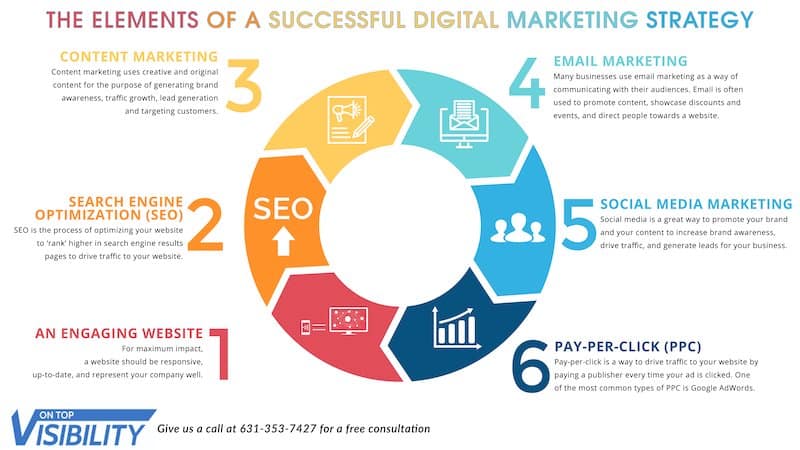
These elements of digital marketing help you connect with your audience wherever they are, interact with them, and motivate them to take action such as making a purchase. By doing so, you increase brand awareness, attract potential customers, convert leads into buyers, foster trust, and ultimately boost your sales.
Understanding the different forms of digital marketing is crucial. It generally involves six primary methods, including:
- Search Engine Optimization (SEO)
- Social Media Marketing
- Content Marketing
- Pay-Per-Click Advertising
- Email Marketing
- Affiliate Marketing
Let’s explore each of these strategies more thoroughly:
1. Search Engine Optimization (SEO)
SEO is the process of improving your website’s visibility by increasing both the quality and quantity of organic traffic from search engine results. Your goal is to attract as many visitors as possible who are genuinely interested in your offerings. SEO helps you rank higher on search engine results pages (SERPs) without paid advertising by optimizing factors like content relevance, webpage speed, mobile friendliness, and backlink profiles, which collectively influence your search ranking. Search engine rankings depend on many factors, including content quality, site speed, mobile compatibility, and the strength of your backlink profile, known as Domain Authority.
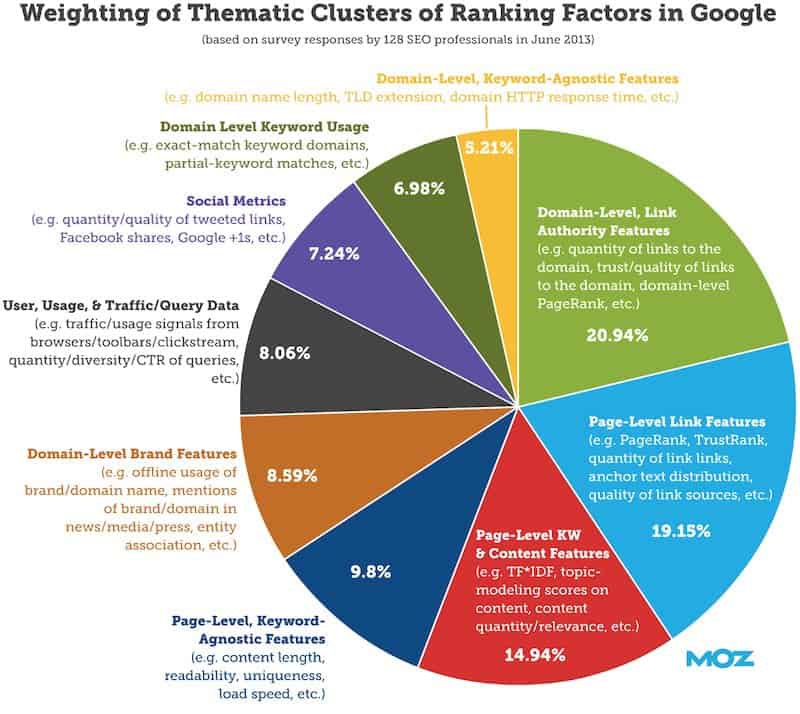
Source: Moz.com
For a deeper dive into SEO, you can review my comprehensive guides:
- Top SEO Tools for Better Rankings
- SEO Tips for Bloggers: 6 Ways to Optimize Content
- Effective Link Building Strategies
2. Social Media Marketing
Social media marketing involves using platforms like Facebook, YouTube, Instagram, LinkedIn, and Twitter to engage your target audience and promote your products or services. This approach helps you broaden your reach to new customers, strengthen your brand recognition, drive more website traffic, and ultimately increase sales. Facebook remains the most popular social network, with over 2.498 billion active users reported as of April 2020.
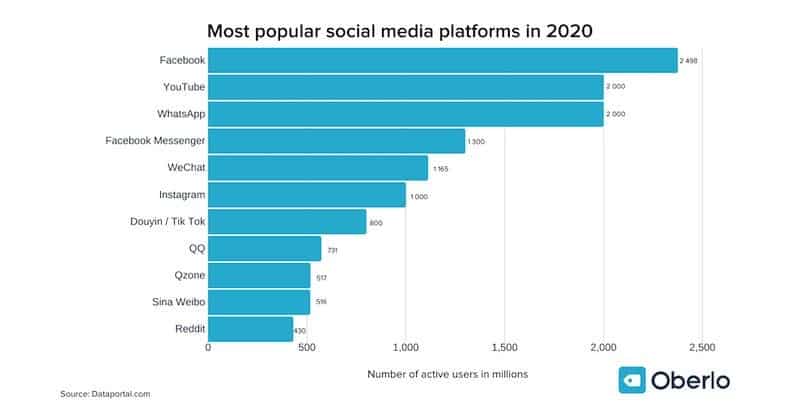
Your social media marketing approach can include sharing content on your profiles, engaging with followers, analyzing your results, and running advertisements and campaigns.
To do it effectively, you need to implement your social media strategy in four key stages:
- Listening
- Influencing
- Networking
- Selling
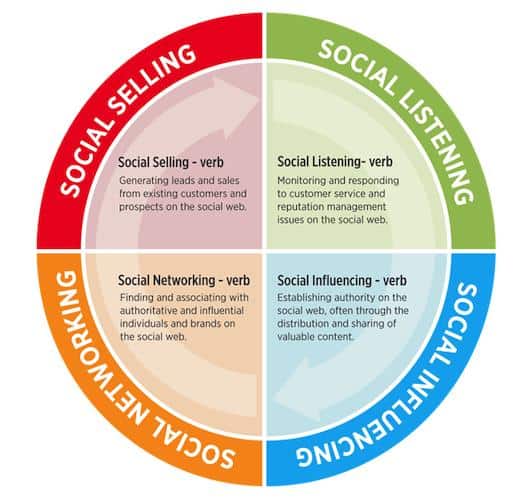
3. Content Marketing
Content marketing involves planning, creating, sharing, and publishing relevant material to engage your target audience. It’s considered one of the most powerful online tactics within a digital marketing plan. Recent research shows that 58% of marketers rank content marketing as highly effective.
Businesses employ content marketing to achieve various objectives such as increasing brand visibility, educating customers, establishing trust and credibility, generating leads and sales, and nurturing potential customers through engagement. Some common channels for content marketing include blogs, infographics, social media, podcasts, whitepapers, videos, and paid advertisements. Personally, I favor creating content that drives traffic to a blog, like this one. If you’re interested, check out my guide on starting a profitable blog.
4. Pay-Per-Click Advertising
Pay-per-click (PPC) is a digital advertising model where advertisers pay for each click their ad receives. This method allows businesses to directly reach specific audiences by placing ads on search engines and relevant websites. PPC campaigns are highly targeted, making them an effective way to boost traffic, generate leads, and increase sales quickly.
Pay-per-click (PPC) advertising is a common approach where you pay for your ads to appear on various platforms rather than earning organic traffic naturally. Essentially, it’s a paid method of directing visitors to your website, giving you control over who sees your ads and when.
Businesses utilize PPC to generate quick traffic and effectively reach and retarget potential customers. Paid traffic also enables precise tracking of your marketing efforts, helping you understand what works best. Additionally, PPC benefits consumers by making it easier for them to discover the information or products they’re searching for. In fact, studies show that customers are 70% more likely to convert after viewing a retargeted ad, highlighting its effectiveness.
Popular platforms for paid advertising include Google Ads, Facebook, Pinterest, LinkedIn, YouTube, Quora, and Twitter. Google Ads is the most widely used, allowing advertisers to bid for prime spots on Google’s search engine results pages (SERPs) at a set cost per click, determined via an auction process.
PPC campaigns can also be run on other channels like:
- Facebook Ads: These allow you to pay for promoted posts, videos, or slideshows that appear on the newsfeeds of targeted audiences. Facebook’s strength lies in its detailed demographic targeting, enabling you to reach users based on location, purchase history, age, gender, interests, and more.
- Twitter Ads: Using Twitter ads involves paying to display posts or profile badges to specific audiences. Your goals could include increasing website visits, gaining followers, or encouraging app downloads.
- LinkedIn Sponsored Messages: This feature involves paying to send direct messages to potential prospects, ideal for B2B companies with high-end offerings. These ads often include case studies, white papers, or product demonstrations to prompt immediate action.
Generally, it’s recommended to start your paid advertising efforts with Google and Facebook, as Combined, they account for approximately 80% of referral traffic. Managing these campaigns is usually handled by specialized digital marketing agencies that focus solely on PPC and paid advertising strategies.
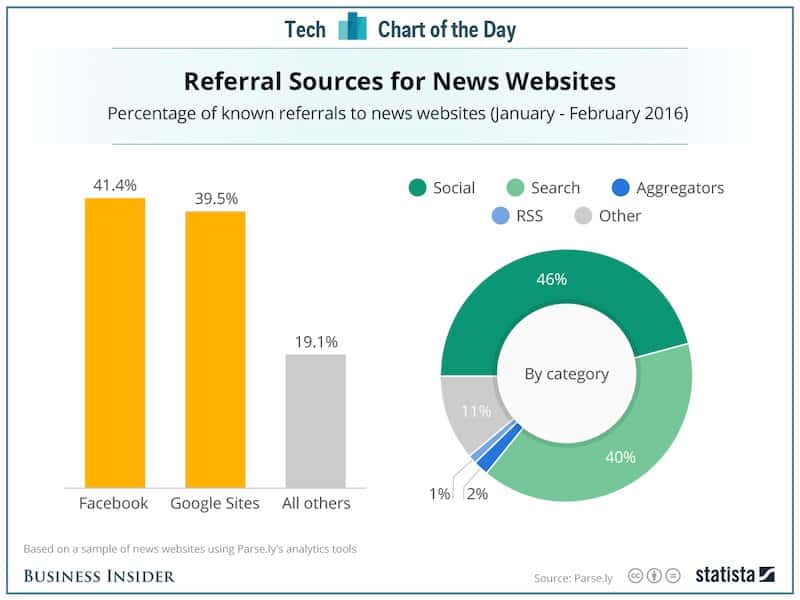
Source: statista.com
5. Email Marketing
Email marketing is a direct digital marketing tactic that involves sending emails to potential or current customers to promote products, services, or updates. It plays a key role in strengthening relationships with existing customers, keeping them informed, and reaching out to new prospects. Through various types of emails — such as newsletters, product launches, welcome messages, purchase confirmations, abandoned cart reminders, nurturing content, follow-ups, promotions, and review requests — businesses maintain ongoing communication.
This strategy boasts a high return on investment (ROI), making it one of the most cost-effective digital marketing techniques. Utilizing specialized email marketing software can deliver an average ROI of $44 for every dollar spent. Many companies continue to depend on email marketing for both attracting new customers and retaining existing ones.
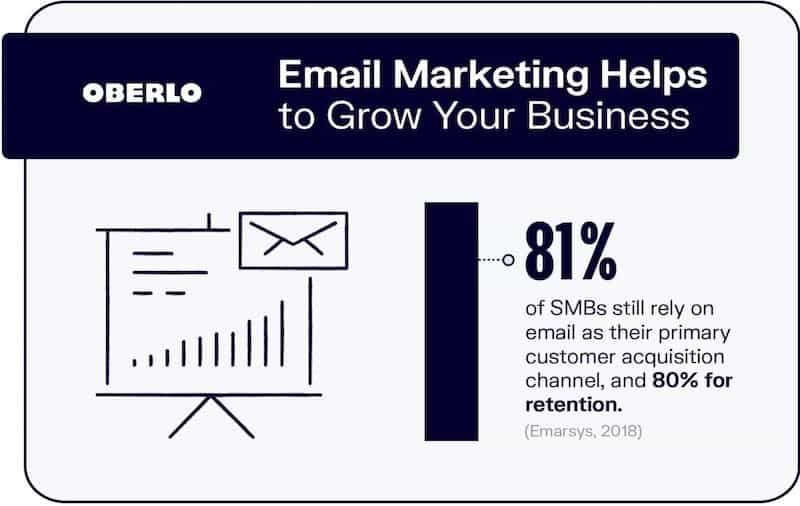

Adding videos to your emails can significantly boost engagement. Data shows that interactive emails can increase click-through rates by as much as 300%, making your campaigns much more effective.
Here are some common practices to optimize your email marketing efforts:
- Start with welcome emails to foster strong relationships with new customers
- Send emails during optimal times, such as 9-11 am and 3-5 pm, when open rates tend to be highest (source)
- Choose a memorable and recognizable sender name
- Create compelling content that encourages recipients to click and engage
- Conduct A/B testing to refine your campaigns before full deployment
- Take measures to avoid your emails ending up in spam folders
- And employ other best practices to maximize success
6. Affiliate Marketing
Affiliate marketing is a strategy where you promote products from other companies and earn commissions on sales made through your referral links.
You can join existing affiliate programs or select products you believe in, promote them to your audience, and earn a percentage of each sale.
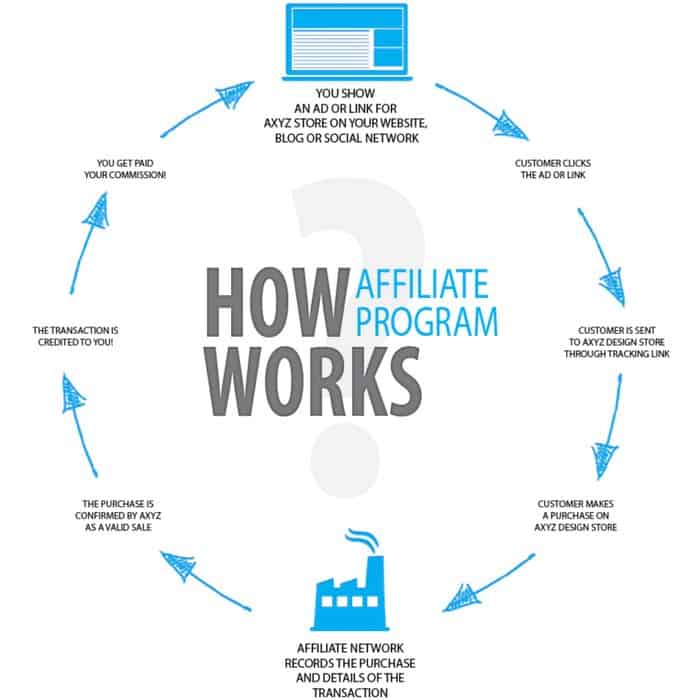
Source: BigCommerce.comThis approach is cost-effective because you only pay commissions based on actual sales. It also allows you to expand your reach, enhance your brand reputation, increase your website traffic, and ultimately boost sales.
Common channels for affiliate marketing include:
- Influencers
- Bloggers
- Email subscriber lists
- Major media websites
- YouTubers
- PPC-focused microsites
Statistics reveal that 81% of marketers and 84% of publishers are using affiliate marketing strategies. This digital approach is quickly expanding, showing no signs of slowing down.
For a more detailed comparison between digital marketing and affiliate marketing, you can check out this comprehensive analysis.
The History of Digital Marketing
The evolution of digital marketing began in the 1990s, driven closely by rapid technological innovations. Its roots extend back to 1971, when Ray Tomlinson first sent an email, establishing the foundation for digital communication and file sharing between machines. Digital marketing truly gained formal recognition in 1990, coinciding with the creation of the search engine Archie, which indexed FTP sites.
The term “digital marketing” was first coined in 1990, the same year Tim Berners-Lee developed Web 1.0, the earliest version of the World Wide Web that allowed users to find information but not share it. In 1993, the first clickable banner ad was launched, with HotWired running the first online ad campaign, which saw about 44% of viewers clicking the ad, marking the start of online advertising’s growth.
In 1994, Yahoo was launched by Jerry Yang, quickly gaining popularity with nearly a million site hits in its first year. This led companies to optimize their websites for better search engine rankings, paving the way for the sophisticated digital marketing landscape we see today.1995 – The introduction of LookSmart.
In 1995, founders Martin Hosking, Evan Thornley, and Tracy Ellery launched a new search engine named LookSmart. It quickly grew into a company specializing in search advertising, content management, online media, and technology services.
1996 – Birth of Alexa.
Alexa was created in April 1996 by Brewster Kahle and Bruce Gilliat as an independent analytics platform for websites. The service gained rapid popularity, offering insights into each visited website and starting to archive web pages through automated “web crawlers” or “bots.” In 1999, Amazon purchased Alexa for about $250 million worth of stock, solidifying its influence in web traffic analysis.
1998 – Google is publicly launched.
Larry Page and Sergey Brin unveiled Google to promote their search engine, which would eventually revolutionize web searching. This same year, Microsoft introduced MSN Search, and Yahoo launched Yahoo Web Search, creating a competitive landscape for search engines.
2002 – LinkedIn is launched.
Reid Hoffman founded LinkedIn in December 2002, pioneering the first social network focused on professional and business use. Its primary functions include professional networking and job postings by companies and job seekers alike. By 2017, statistics showed that 94% of B2B marketers relied on LinkedIn for content distribution, highlighting its importance in corporate marketing strategies.
2003 – News of Myspace and WordPress debut.
Myspace emerged in 2003 as a social networking platform that once surpassed Yahoo and Google to become the most visited site in the US. However, by April 2008, Facebook had overtaken Myspace in global visits. Meanwhile, American developer Matt Mullenweg and English developer Mike Little launched WordPress, now one of the world’s most popular content management systems, used by over 75 million websites worldwide.
2004 – The term Web 2.0 gains public recognition.
During a conference, O’Reilly Media popularized the phrase Web 2.0, describing a new era of interactive web platforms where users could comment, create profiles, and contribute content. The year also marked the launch of Facebook by Mark Zuckerberg and the release of Gmail on April 1, 2004, offering free email with attachments up to 50MB. Facebook grew rapidly to become one of the dominant social media platforms with billions of users.
2005 – YouTube’s debut.
YouTube was launched by PayPal employees Chad Hurley, Steve Chen, and Jawed Karim as a site for video sharing. Within a year, it had over 25 million videos uploaded daily and generated around 20,000 uploads each day. Recognizing its potential, Google acquired YouTube for $1.65 billion in stock on October 9, 2006. Today, it boasts over 2 billion users worldwide.
2006 – The surge in search engine traffic.
Search engine traffic soared to over 6.4 billion monthly visits this year, signaling a major shift in digital engagement. Microsoft launched Live Search as a competitor to Yahoo and Google. Also, Jack Dorsey introduced Twitter—a fast-growing social network—further transforming online interaction.

By 2020, Twitter attracted approximately 330 million monthly active users and had 145 million daily users. Users tend to spend 26% more time engaging with ads on Twitter compared to other social media platforms, highlighting its advertising potential.
2007 – Growth of marketing automation tools.
In response to the rapidly evolving web landscape, marketing automation tools became increasingly popular. Companies adopted sophisticated software solutions to automate routine tasks like lead segmentation, deployment of multichannel campaigns, and delivery of personalized content, enhancing efficiency and targeting precision.
2009 – Google enhances AdWords.
Google revamped its AdWords platform, allowing advertisers to measure conversion rates within 30 days of an ad’s display, even if no clicks occurred. Additionally, Google introduced a new feature in AdSense that enabled multiple networks to display ads, broadening advertising reach.
2010 – Instagram’s launch.
Kevin Systrom and Mike Krieger launched Instagram in October 2010, focusing on photo and video sharing. The platform gained rapid popularity, reaching one million users in just two months and 10 million within a year. By May 2019, Instagram had 1 billion registered users, becoming a key player in digital marketing. Studies show that around 200 million Instagram users visit at least one business profile daily. The same year, digital media growth surged with an estimated 4.5 trillion online ads served annually, and digital marketing expenditure grew by 48%.
2011 – The introduction of Google Panda.
Launched in February 2011, Google Panda marked a significant change in search engine rankings, aiming to elevate high-quality websites while demoting low-quality content. This update reshaped how sites were evaluated and ranked on Google, emphasizing the importance of quality in search engine optimization.Reportedly, this had an impact on approximately 12 percent of search results in Google’s rankings.
2014 experienced a significant rise in mobile device usage, with projections estimating around 1.75 billion mobile users by that year. During this period, the Facebook Messenger app and the Apple Watch (iWatch) were also introduced to the market.
In 2015, Snapchat launched its Discover feature, offering a daily stream of content from brands such as ESPN, National Geographic, and Yahoo News. This year also marked the emergence of new technological advancements like predictive analytics, content marketing, and wearable technology.
One of the most noteworthy innovations in digital marketing is the development of cookies. Originally designed to track user behavior, their role has expanded considerably over time. Today, companies use coded cookies to gather precise user data in various ways, enhancing marketing strategies.
The digital marketing landscape is constantly changing, with current trends including chatbots, voice search, augmented reality (AR), virtual reality (VR) advertising, artificial intelligence (AI), and machine learning.
The influence of digital marketing on customer engagement, purchasing behavior, work routines, and habits is profound. With over 4.13 billion internet users worldwide, businesses cannot ignore the importance of online marketing efforts. Digital marketing bridges companies with their target audiences through online content, social media, email campaigns, and other digital channels.
Connecting with the target audience directly is a major benefit of digital marketing. Unlike traditional offline advertising, which requires substantial expenditure on billboards and print ads, digital channels allow brands to engage potential customers through private messages and personalized interactions. This approach particularly benefits small and medium-sized businesses (SMBs).
For example, social media marketing enables SMBs to promote their products and services by engaging with audiences publicly or via direct messaging. As a result, approximately 96% of small businesses incorporate social media into their marketing plans, and around 90 million utilize Facebook’s features such as Pages, Groups, and Messenger.
Today’s consumers increasingly seek transparency from brands. Digital marketing facilitates this by allowing companies to showcase their values and build trust. Research shows that 94% of consumers are more likely to remain loyal to brands that demonstrate transparency, and 66% consider transparency one of the most attractive qualities in a company. Furthermore, 73% are willing to pay more for transparent products, and 31% share positive experiences about transparent brands online.
Understanding this trend, digital marketers strive to keep audiences informed with honest and relevant information, fostering trust and loyalty.
Additionally, social media and video platforms like YouTube have created a new generation of influencers—ordinary people who develop niche followings and hold significant sway over their audiences. This shift allows businesses to engage micro-influencers instead of paying hefty sums to traditional celebrities for endorsements. These influencers often foster a sense of familiarity and intimacy, acting like friends who personally recommend products.
Consequently, 70% of teenagers relate more to niche influencers than to big-name celebrities, highlighting the powerful role these online personalities play in modern marketing strategies.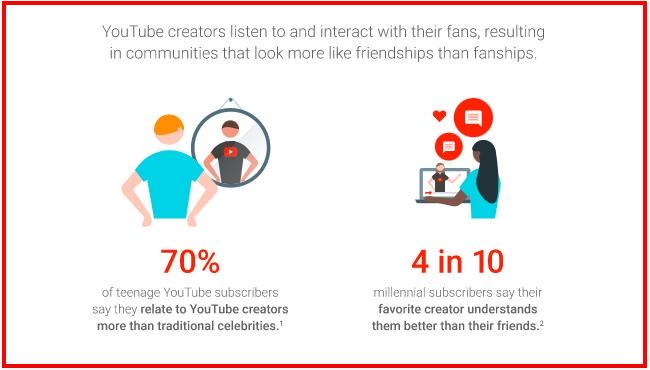

Many major brands are now utilizing new influencers to connect with and persuade their audiences.
Daniel Wellington exemplifies this trend well. Instead of relying on traditional celebrities, DW partnered with micro-influencers to promote their watches. This strategy paid off—they are now a highly recognizable brand with estimated revenues of around $220 million in 2015.
As a result, influencer marketing has become a powerful approach for brands to increase visibility and sales.
4. Personalized marketing becomes a priority
With the rise of digital marketing, brands are emphasizing authenticity and a more human touch in their messaging.
Here are some quick facts highlighting the importance of tailored marketing: 79% of consumers prefer personalized offers that reflect their previous interactions with a brand. Additionally, around 63% of millennials, 58% of Generation X, and 46% of Baby Boomers are willing to share personal information in exchange for personalized discounts or offers.
Today, both small startups and large corporations focus on building trust with customers before making a direct sales pitch. For instance, Apple often hosts live-streamed events on social media platforms, engaging millions even before product launches, thereby fostering anticipation and credibility among their audience.
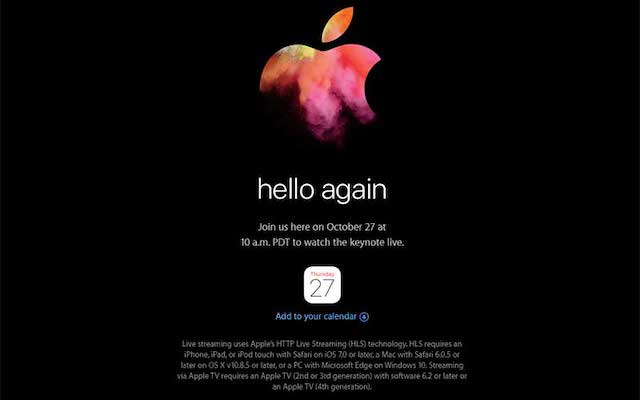
5. Customer impatience and the need for speed
Modern online shoppers are quick to abandon slow-loading sites—they expect immediate information and quick results. If your website takes too long to load, you risk losing potential customers. Research shows that a delay of just 100 milliseconds can drop conversion rates by 7%.
Furthermore, with millions of mobile users browsing through various e-commerce platforms, quick responses are essential. Approximately 70% of smartphone users make purchase decisions within an hour of browsing. Therefore, delivering fast, relevant content is just as crucial as providing valuable information.
6. Better understanding of customer needs
Digital marketing tools enable businesses to gather extensive data about their customers, which can be used to enhance the overall experience, attract new clients, and strengthen loyalty. Statistics reveal that 56% of consumers remain loyal to brands that understand them well and cater to their needs.
This insight allows companies to refine their marketing strategies, personalize communications, and develop products that resonate more effectively with their target audiences. As a result, understanding customer behavior and preferences is key to building long-term relationships and maintaining competitive advantage.
Data visualization tools, such as Google Analytics, Facebook Audience Insights, and Zoho Analytics, help you gain detailed insights into your target audience. Unlike traditional marketing, digital marketing provides precise reports with exact data, allowing businesses to evaluate their strategies’ effectiveness and identify areas for improvement. This measurable data helps owners optimize their processes, focus on what works best, and enhance overall results.
Digital marketing offers numerous advantages regardless of the type of business. Its benefits include cost efficiency, personalized communication, improved customer support, targeted marketing, higher conversion rates, access to innovative marketing channels, and the ability to create and automate multi-channel campaigns. Let’s explore some of the key benefits one by one:
1. Low Cost and High Return on Investment
One of the most significant advantages of digital marketing is its cost-effectiveness compared to traditional methods. You can initiate content marketing initiatives even on a small budget. Developing a solid content marketing plan, starting a blog, and publishing weekly posts can save money and generate substantial results. Statistics reveal that 90% of organizations incorporate content into their marketing efforts, and content marketing costs about 62% less than traditional advertising while generating approximately three times as many leads.
Along similar lines, email marketing is another budget-friendly strategy that yields excellent results. It helps generate leads, boost sales, deliver targeted messages, and increase brand awareness. With a remarkable ROI of 4200%—meaning $42 return for every dollar spent—email campaigns are a favored tool. According to a survey by Adobe, 52% of companies consider email marketing their primary communication channel, underscoring its effectiveness.
2. Personalized Engagement
Thanks to data analysis, digital marketing enables the delivery of customized content and messages tailored to individual customer traits. Personalized communication is vital to increasing customer satisfaction, engaging users on a personal level, and driving sales. A Gartner survey highlights the positive effects of personalization, with 62% of consumers stating it helps them secure better deals, 49% feeling it saves time, and 45% experiencing a simplified purchasing process. Additionally, 46% of respondents reported that personalization provided them with information they previously lacked, making their shopping experiences more convenient and satisfying.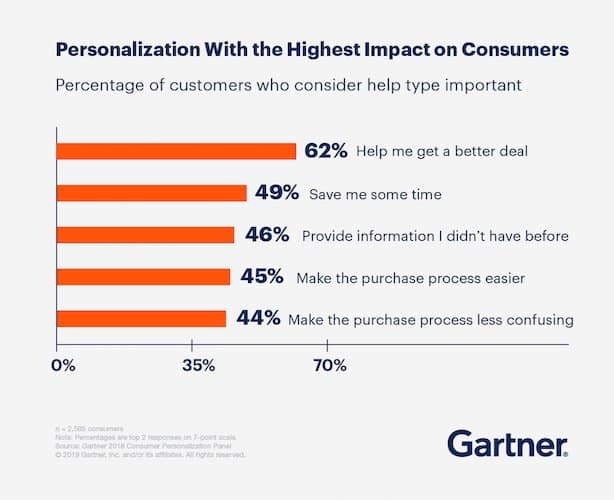
When Infinity Nation and Meteor Electrical launched a personalized email campaign, they successfully reconnect to past customers, encouraging them to make repeat purchases and increase sales. They used three key components: system integration, dynamic content tailored to each recipient, and customer data. This approach led to a remarkable 177% increase in email open rates and an average revenue of £106 per re-engaged customer.
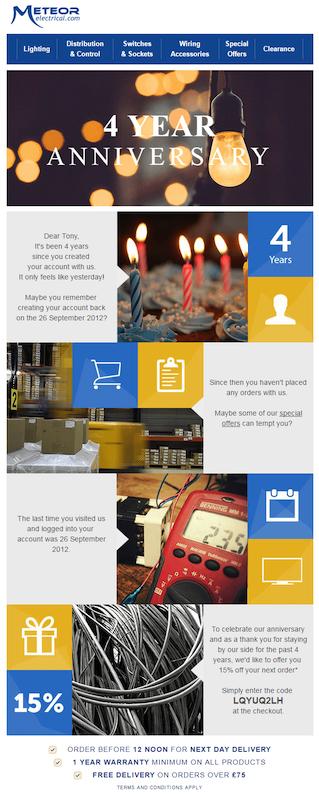
The company focused on three vital elements for crafting personalized email campaigns: integrating their systems seamlessly, using conditional content that adapts to the customer, and leveraging comprehensive customer data. This strategy resulted in significantly higher engagement and sales, proving the effectiveness of personalized marketing.
The benefits of personalization extend beyond email marketing. Personalization can dramatically enhance customer trust and corporate reputation. For new businesses, establishing trust can be challenging; however, digital marketing channels offer powerful tools such as social proof—showing social media followers, positive blog posts, endorsements by influencers or celebrities, and customer reviews. For example, BuzzSumo uses customer testimonials to demonstrate how their existing clients are benefiting from their services, thereby strengthening credibility. Such social proof not only promotes brand popularity but also attracts higher-quality leads and boosts sales. Customers now tend to read at least ten reviews before making a purchase, and testimonials can improve conversion rates by up to 34%.
Providing excellent customer service is crucial for building trust. Research indicates that consumers are willing to pay 17% more for brands known for superior service. Conversely, poor customer experience causes about 78% of shoppers to abandon their purchases. Digital marketing can significantly enhance support efforts through social media, chatbots, and automation, allowing real-time communication and quick problem resolution. Self-service options—such as FAQs and automated solutions—are especially popular, with 73% of customers preferring to resolve issues independently, and over 60% favoring automated assistance for routine tasks. Businesses that adopt these tools can improve customer satisfaction and operational efficiency.
Ranking higher in search engine results is another key advantage of digital marketing. By optimizing your website and content, your business can gain better visibility in search rankings, ultimately attracting more organic traffic and potential customers.Blogs and websites can achieve higher search engine rankings and attract more readers by adopting effective content marketing and SEO strategies.
For instance, focusing on long-tail keywords and trending topics that your target audience is searching for can significantly boost visibility. Equally important is consistently posting high-quality, relevant content that engages your visitors.
Many businesses are also exploring voice search optimization, which is expected to become a major trend in digital marketing. In fact, estimates from 2020 suggest that half of all searches may soon be conducted through voice commands. Voice search is particularly convenient for quick queries at home or on the go, helping users research products and find local businesses more easily.
Why not embrace this trend? Optimizing for voice search can give your content an edge in the evolving digital landscape.
Measuring the success of your marketing campaigns is another key benefit of digital strategies. Each campaign—whether on social media, through email, or via search engine optimization—comes with tools that allow you to track performance. Using analytics platforms like Google Analytics, you can monitor important metrics such as impressions, clicks, shares, comments, and conversions. This data helps you refine your campaigns, ensuring you’re investing your resources effectively and making adjustments as needed while the campaign is ongoing.
Digital marketing also offers the advantage of precisely targeting specific audiences. By understanding your ideal customer profiles or creating detailed buyer personas—derived from your contact database, interviews, or advertising efforts—you can focus your marketing efforts on prospects most likely to convert. For example, employing targeted digital ads allows you to reach audiences based on characteristics like age, gender, interests, hobbies, or occupation. Platforms like Facebook enable you to define these traits very specifically, making your marketing efforts more efficient and cost-effective by attracting higher-quality leads.
Furthermore, digital marketing provides the flexibility to adapt and improve campaigns dynamically. If certain strategies or tactics aren’t delivering expected results, you can make real-time adjustments. Whether it’s fine-tuning pay-per-click (PPC) campaigns, enhancing SEO efforts, or modifying your content strategy, ongoing optimization helps you maximize your marketing impact.
However, digital marketing isn’t without its drawbacks. Being aware of these challenges is crucial for developing a comprehensive approach.
One significant challenge is the intense global competition. While online platforms allow you to reach worldwide audiences, they also mean competing against countless other brands vying for attention. Standing out amidst this noise can be difficult.
Negative feedback online can also pose risks. Customers are likely to leave reviews—both positive and negative—and a slew of unfavorable comments can harm your reputation. Studies show that a single negative review can turn away about 22% of potential customers, equating to roughly 30 prospects. To mitigate this, many businesses use reputation management tools to monitor and respond to reviews proactively.
Data security and privacy concerns are additional obstacles. Complying with legal regulations related to customer data collection and ensuring your website and customer information remain secure require ongoing effort. The risk of data breaches or privacy violations can lead to significant reputational and financial damages.
Lastly, success in digital marketing often demands patience. Building effective online campaigns, optimizing content, and seeing tangible results can take considerable time. Marketers must be prepared to wait and continuously refine their strategies to achieve long-term success.Results. Moreover, you’ll need to track your progress to ensure a strong return on investment.
The future of digital marketing is constantly changing. To stay competitive, your business must keep up with emerging trends.
What can we expect ahead? Key developments like voice search, artificial intelligence and automation, personalized marketing, and influencer collaborations are likely to lead the way.
Let’s delve into each of these areas.
1. Artificial Intelligence and Automation
Many industry surveys emphasize AI’s increasing significance in digital marketing. In one study, when participants were asked why businesses need AI, 84% responded that it provides a competitive advantage, and 75% believed AI would unlock new growth opportunities. Businesses are also leveraging AI more to cut costs and better match supply with demand.
Marketing automation is already widespread. In 2016, 71% of organizations had adopted automation tools, and projecting forward, spending on these solutions might reach $25.1 billion annually by 2025. Automation tools assist in generating and converting leads, boosting sales, and enhancing customer experiences, provided companies know when and how to use them.
2. Voice Search
The rise of smart speakers and digital assistants like Siri and Alexa has made voice search increasingly popular. As a result, many brands are optimizing their content for voice queries. Voice shopping expenditures are projected to hit $40 billion in 2022, and by 2024, the global voice-enabled smart speaker market could be worth around $30 billion. Currently, Google Home delivers the most accurate responses, answering 81% of questions correctly. Moving forward, businesses should focus on providing precise, relevant answers, as well as enhancing personalization, compatibility, integration, touch interaction (combining voice and visuals), and security.
3. Social Media
Experts anticipate that marketers will rely more heavily on social media to automate processes, scale efforts, and foster engagement. Simultaneously, there will be a greater focus on authenticity, trustworthiness, and transparency. With billions of users active worldwide—over 3.5 billion as of 2019—social platforms like Facebook remain vital for reaching broad audiences. Video content is predicted to become even more dominant, with users expected to spend around 100 minutes daily watching online videos in 2021—an increase of 19% from 2019. Many marketers prefer advertising on social channels due to their high viral potential, and this trend underscores the growing importance of engaging visual content.
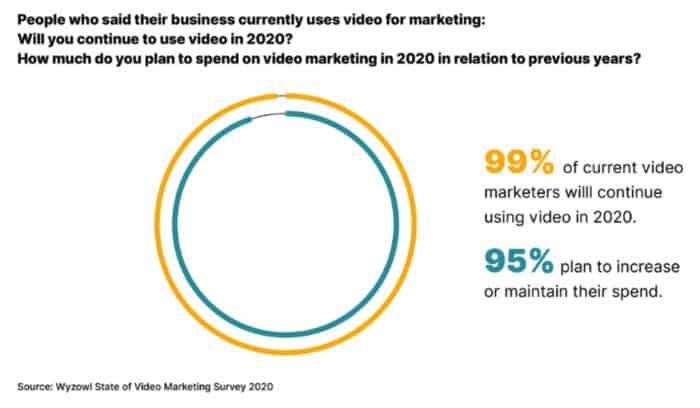
Source: SmartInsights.com
4. Chatbots.
The use of live chat software and chatbots continues to grow in popularity, reflecting a rising demand for better customer service experiences.
Chatbots are increasingly being adopted by companies to streamline support, solve customer issues quickly, and provide immediate responses. Currently, there are over 300,000 chatbots operating on Facebook alone. Besides providing efficient assistance, these bots help companies cut costs related to customer support. Voice bots are also gaining traction, as more messaging platforms incorporate voice and text interfaces to enhance user interactions.
5. The rise of influencer marketing.
In the past, brands spent millions to have top celebrities endorse their products, a strategy that was often out of reach for small businesses. This changed with the emergence of influencer marketing. Today, many firms focus on partnering with micro-influencers—individuals with over 10,000 followers in specific niches. These influencers are influential enough to impact purchasing decisions but are more accessible and cost-effective than mega-celebrities. Surveys show that nearly 62% of marketers collaborate with influencers to develop content, and many automate the process to select the best influencer for their brand. Using AI-powered tools, companies can analyze potential influencer-brand affinities by quickly examining countless images and attributes to find suitable collaborators.
Digital Marketing FAQs.
Executive Summary
That wraps up my overview on digital marketing. Implementing these strategies can significantly help grow your online presence and business. Remember, digital marketing is a limitless field with continuous opportunities for innovation and improvement.
Take your time to learn and adapt, as the digital landscape evolves rapidly. Staying updated with the latest trends and fundamentals is crucial for success, so make sure you keep honing your skills to maximize online visibility and reach your goals this year.
